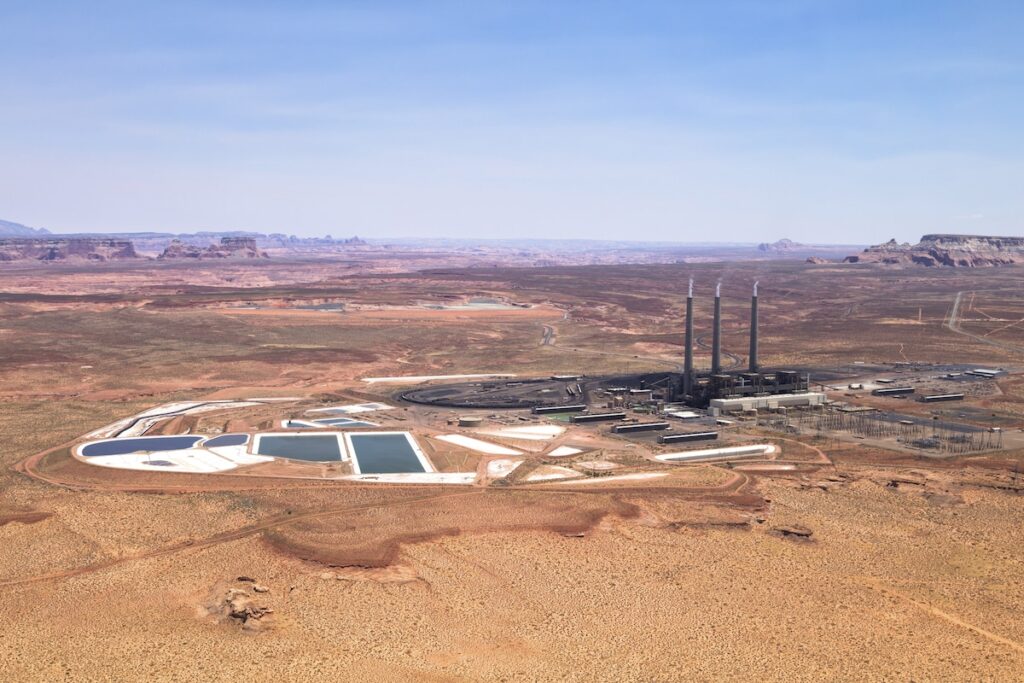Biden’s DOE Announces $366 Million for Green Energy Projects in Rural and Remote Areas
3 min read
The Navajo Generating Station is a 2250 megawatt coal-fired power plant located on the Navajo Nation Reservation near Page, Arizona. Bim / iStock / Getty Images Plus
Founded in 2005 as an Ohio-based environmental newspaper, EcoWatch is a digital platform dedicated to publishing quality, science-based content on environmental issues, causes, and solutions.
The Biden administration has announced that the United States Department of Energy (DOE) will provide $366 million in funding for 17 renewable energy projects in remote and rural areas of the country to alleviate high energy bills and improve reliability.
The funding supports the administration’s target of directing 40 percent of climate-related investment benefits to communities that have been subjected to a disproportionate amount of pollution or are underserved, reported Reuters.
“These projects overall are going to create more affordable, more reliable energy sources, they will lower families’ energy bills, and they’ll create good paying jobs in their communities,” U.S. Secretary of Energy Jennifer Granholm told reporters, as Reuters reported.
As part of the administration’s Investing in American Agenda, the funds will support clean energy projects in 30 Tribal communities and nations and 20 states, a press release from the DOE said.
“This funding — made possible by the President’s Bipartisan Infrastructure Law — will support a variety of community-driven energy projects in rural and remote regions, such as building microgrids for community health centers to ensure electricity for critical life-saving equipment or constructing a new hydroelectric facility on Tribal lands to improve access to reliable, affordable energy,” the press release said.
According to a 2023 DOE Office of Indian Energy report, an alarming 21 percent of homes that are part of the Navajo Nation, as well as 35 percent of Hopi Indian Tribe residences, are unelectrified. Of those that do have electricity, 31 percent reported outages each month.
Additionally, 300 of the 350 counties in the U.S. that are “persistently poor” are rural. A consistent “energy burden” of three times more household income put toward energy bills is placed on low-income residents.
The projects are part of the Energy Improvements in Rural or Remote Areas (ERA) program, managed by the DOE’s Office of Clean Energy Demonstrations.
“The ERA program leverages DOE’s expertise in resilient energy solutions while recognizing the unique environmental, cultural, and economic landscapes of rural and remote communities. The selected projects cover a range of clean energy technologies, from solar, battery storage systems and microgrids to hydropower, heat pumps, biomass, and electric vehicle charging infrastructure,” the press release said.
Tribal communities like the Hopi and Navajo will be supported by at least 12 of the projects. The communities plan to install solar systems with battery storage to bring electricity to 300 homes.
Another proposed set of green energy projects expects to save each of the Taos Pueblo households in its area $700 annually.
“President Biden firmly believes that every community should benefit from the nation’s historic transition to a clean energy future, especially those in rural and remote areas,” Granholm said in the press release. “Thanks to the President’s Investing in America agenda, DOE is helping revitalize communities across America — ensuring thriving businesses, reliable access to clean energy, and exciting new economic opportunities, now and for generations to come.”
Subscribe to get exclusive updates in our daily newsletter!
By signing up, you agree to the Terms of Use and Privacy Policy & to receive electronic communications from EcoWatch Media Group, which may include marketing promotions, advertisements and sponsored content.





